Customer education is one of the pillars of success in the SaaS industry.
As you’re probably well aware, creating and releasing a software product takes lots of effort, expertise, time, and resources.
However, achieving success doesn’t end with doing your best to provide users with a fantastic product. It’s also important to teach your customers everything they need to know about it.
What is customer education, why is it important, and how to approach it in the most effective way?
Keep reading, and you’ll have all the answers.
What Is Customer Education
When you’re striving to succeed as a SaaS company, it goes without saying that offering a great product is essential, but there’s another important element required for success—customer education.
You probably have an intuitive understanding of what it means to educate customers, but here’s how Vinay Londhe, an experienced digital marketing expert, defines it.
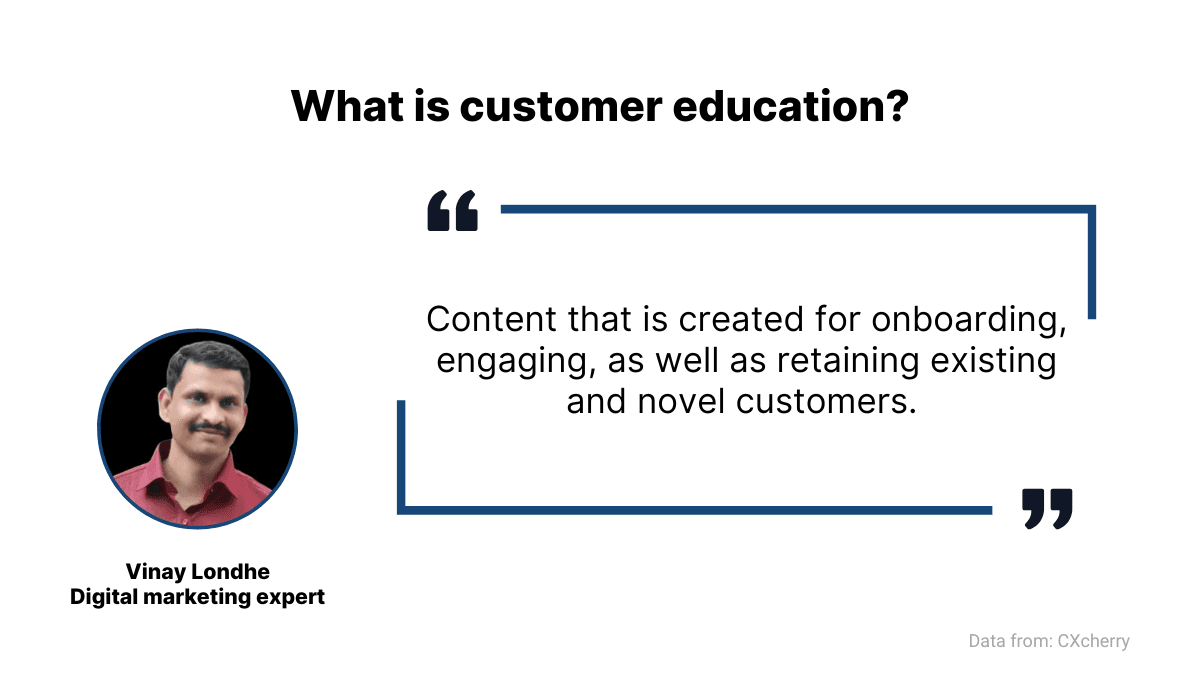
Source: Archbee
As you can see, customer education revolves around content that helps customers in various situations, whether they’re just starting to use the product or they’re already experienced with it.
That’s what makes it such a vital element for every SaaS company. No customer will know everything about your product all of the time.
As the product evolves, there will always be new features and elements to learn about.
Furthermore, customers usually want educational content to accompany the software products they use.
Conductor, a content marketing platform, researched the importance of such content for customers.
According to their results, when given a lineup of four brands, 83.6% of customers chose to purchase from the one that provided them with educational content.
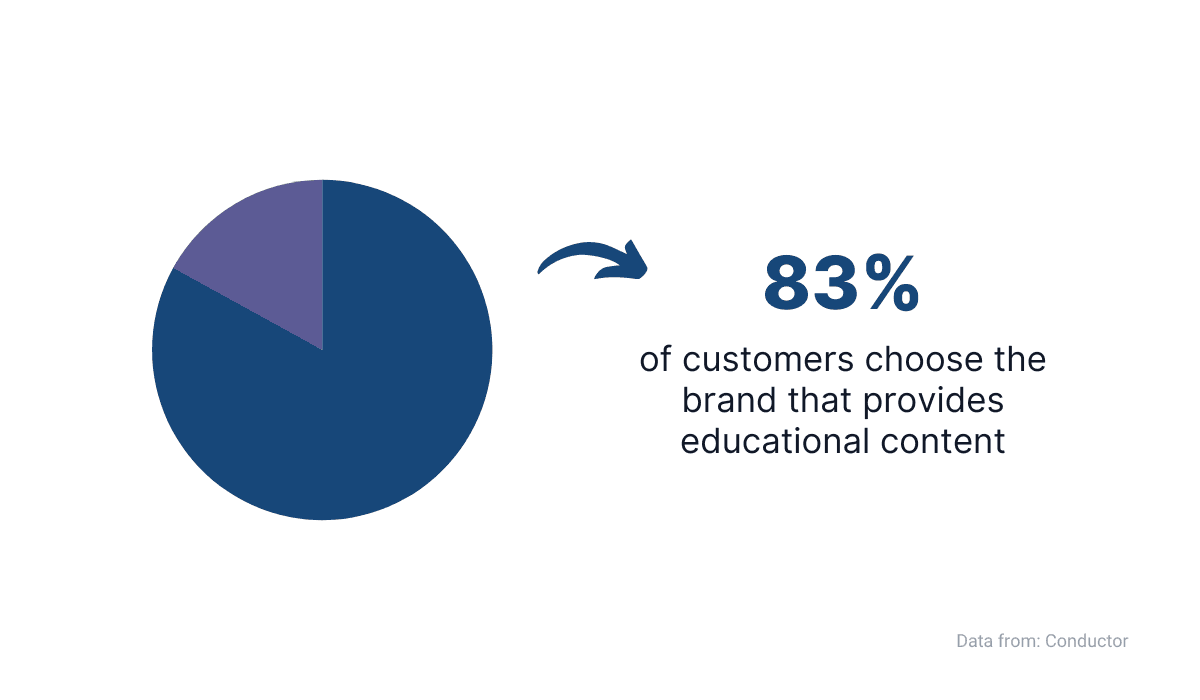
Source: Archbee
So, it’s clear that customer education is something that SaaS companies should take seriously.
But what does educational content look like?
There is no definitive answer to that. Educational content can come in various forms, including:
- Help articles
- How-to guides
- Video tutorials
- In-product guides
- Product academies
In short, you can provide customer education in a variety of ways, combine them, and maximize the potential of your content.
For example, Heap, a digital insights platform, created extensive customer education materials in many forms and put them all together in one help center.
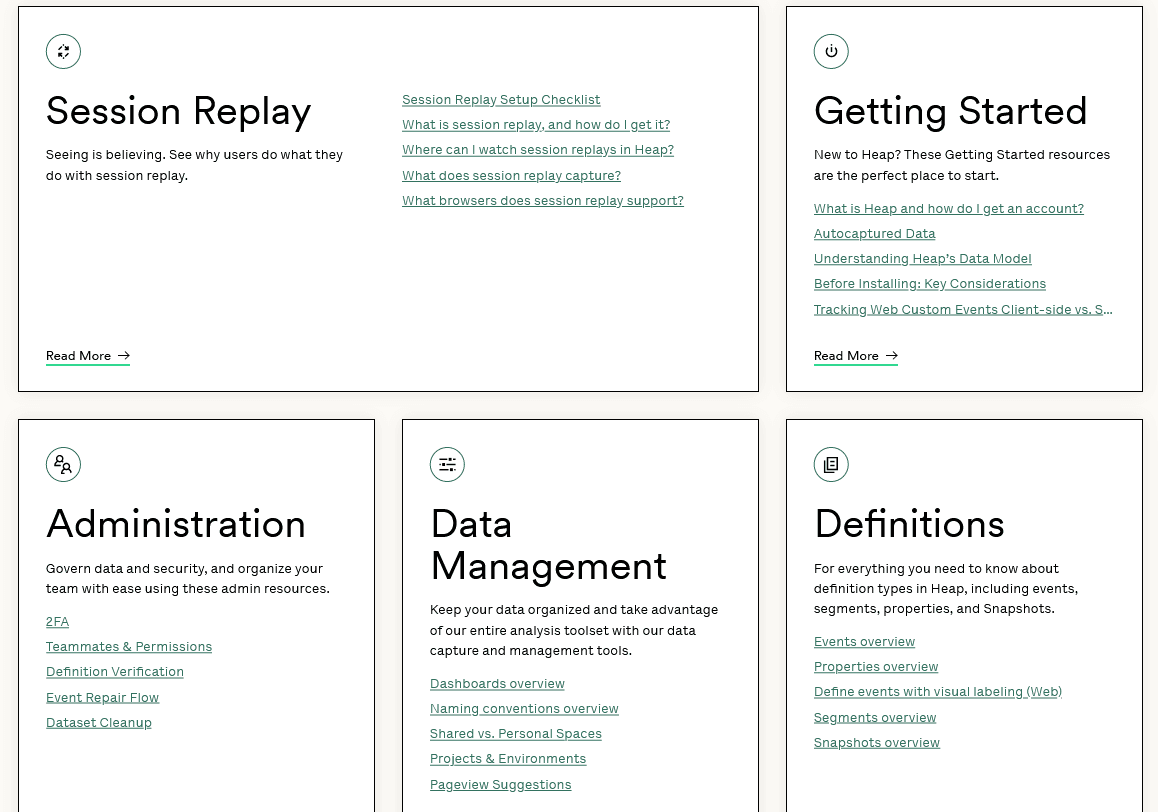
Source: Heap
They maintain an extensive library of help articles divided into various categories, some of which you can see above.
But there is also a Heap University that offers courses on different topics and experience levels.
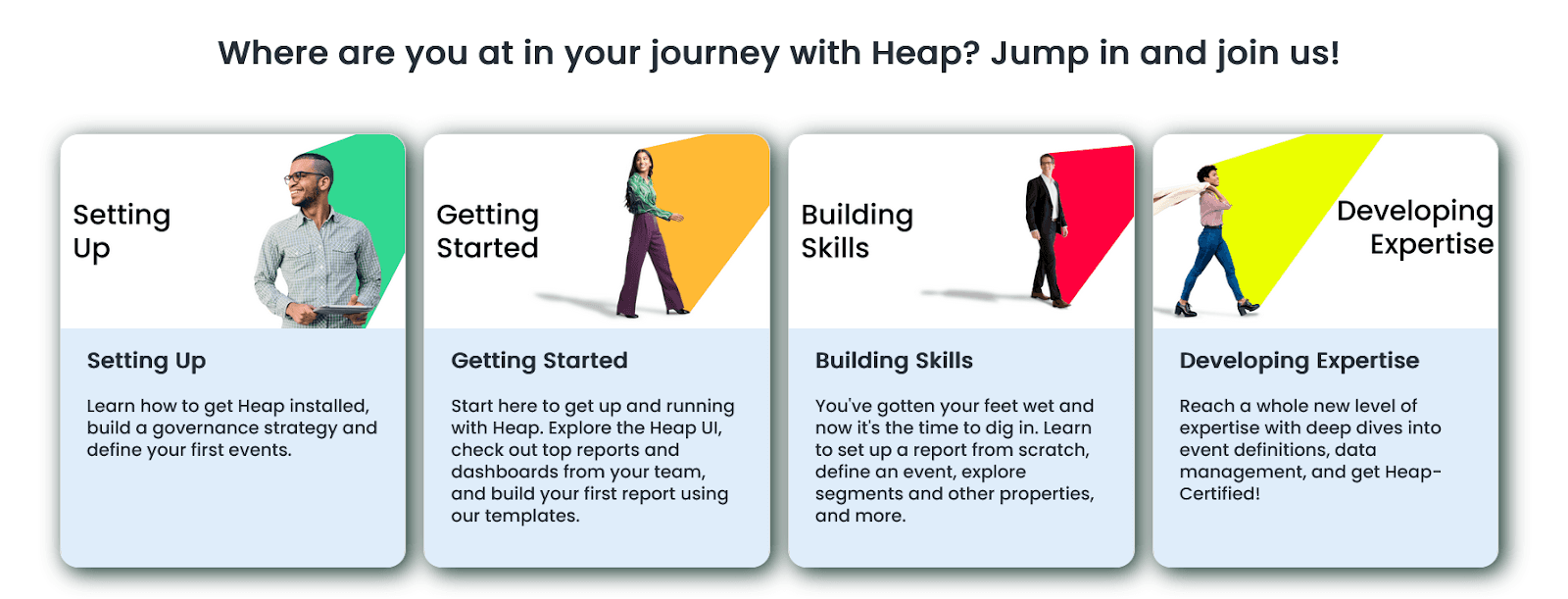
Source: Heap
Even that isn’t all. Heap also provides other forms of education like live training, podcasts, step-by-step playbooks, and a community for users to learn from each other.
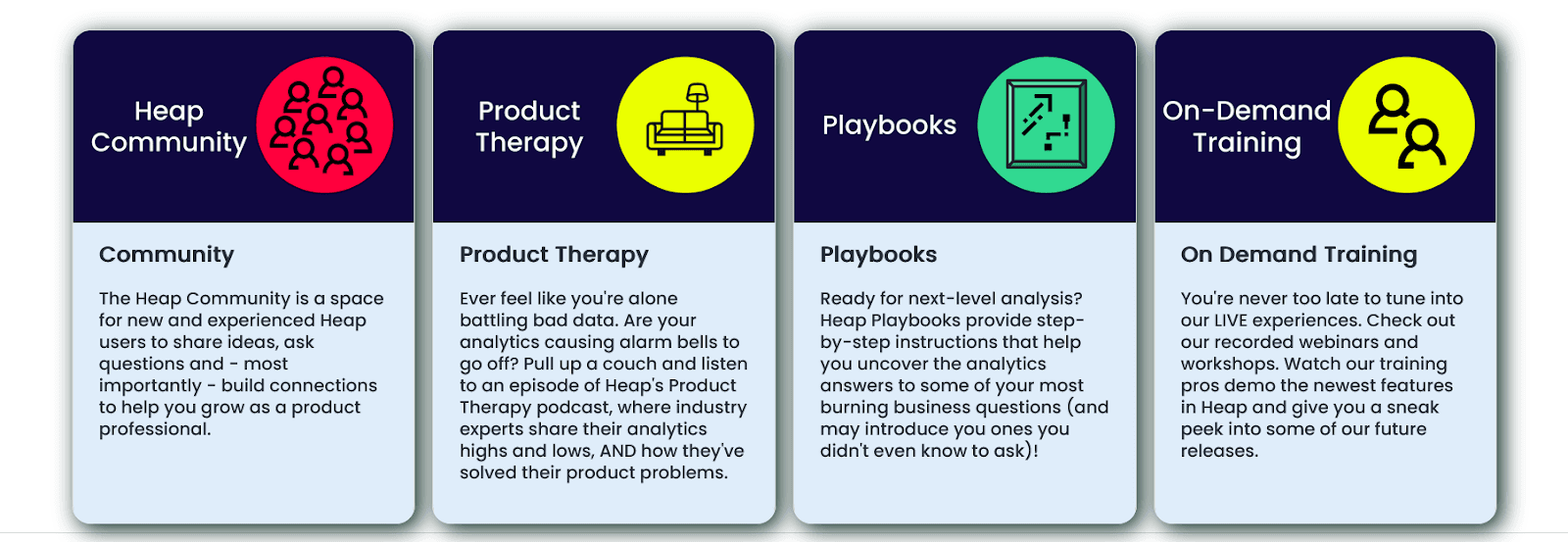
Source: Heap
To sum up, all of that is customer education.
What kind of content you’ll provide to your customers and how much depends on you, but it can all be beneficial both for your company and for your customers.
How? Let’s dive deeper into that question in the next section.
Why Is Customer Education Important for SaaS Companies
Customers who are well-informed about your product can get the most out of what you offer because they can use the product more effectively and solve their problems, which makes them happy.
That’s what makes educating your customers about your product so valuable—happy customers are crucial for business success.
But let’s start with the first of the many reasons why customer education is important.
It Makes Onboarding More Effective
Software products aren’t always intuitive or easy to use. They might seem that way to you, but for the average user, it can be challenging to find a way around a piece of software.
That’s why the onboarding process is so important. During onboarding, you can show new users the basics of using your product and the most important features they need to master.
In other words, you educate them about your product so they can independently use it and integrate it into their daily routine.
Don’t underestimate the importance of the onboarding process. According to data from Wyzowl, most users think that companies don’t devote enough attention to it.
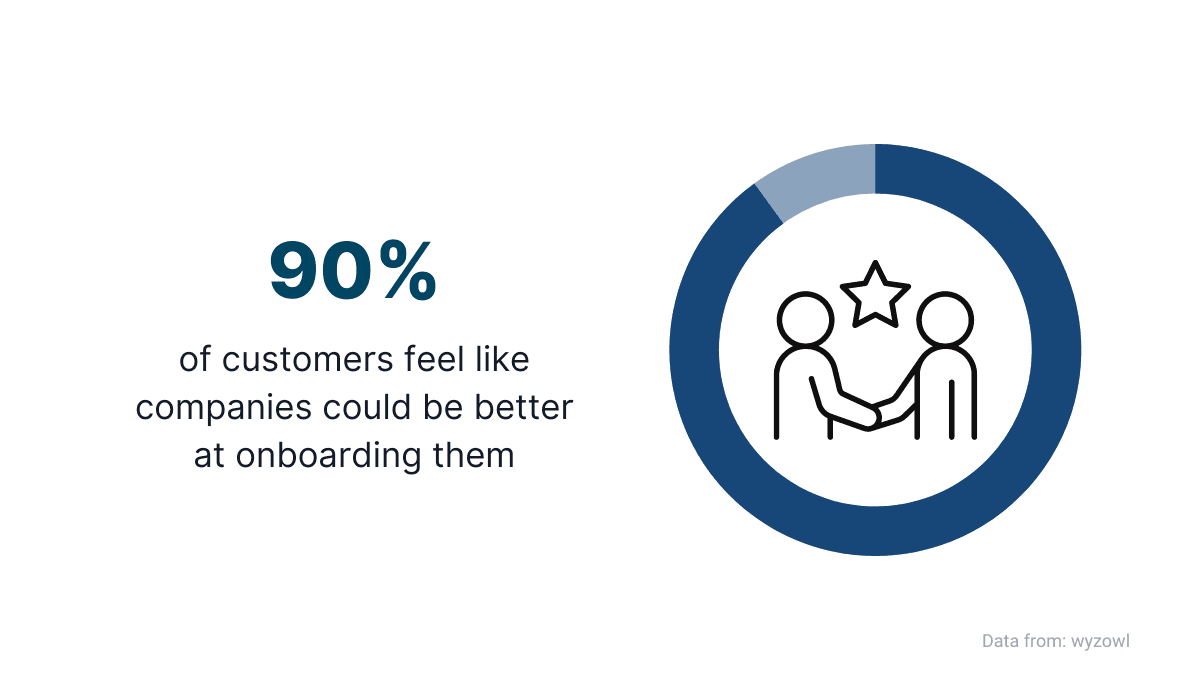
Source: Archbee
There are many ways to educate your customers during onboarding.
You can use checklists, onboarding videos, or help articles, to name just some of the possibilities.
However, one of the most effective methods is certainly an interactive walkthrough.
Why? Because that way, customers learn by doing, and they are engaged in the product immediately.
For example, Grammarly, a popular text editor, has an interactive walkthrough when you install their Chrome extension.
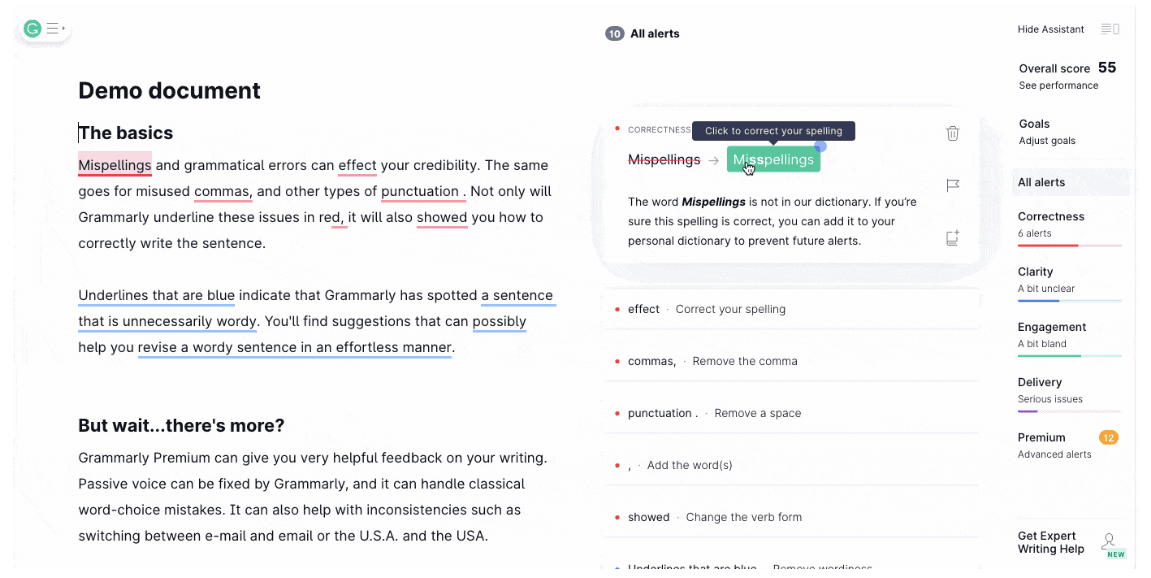
Source: Wyzowl
The tool has many features, and it might take a long time to explain them one by one in a how-to article or a video.
The Grammarly interactive walkthrough takes a different approach.
It presents the users with the whole interface and encourages them to explore what they can do by putting blue hotspots on the places where they can click.
That way, the user learns until they can navigate the app on their own and use every aspect of it.
Whether you take that approach or a different one, ensure that you educate your customers right from the start.
It Decreases the Volume of Support Tickets
A customer support team is vital for any SaaS business. Members of the team always need to be prepared to assist customers with their questions and problems, making product use easier.
However, that doesn’t mean that their job necessarily needs to be to answer the same basic questions and solve the same repetitive issues day in and day out.
Educated customers will know how to use the product, where to find the features they need, and how to troubleshoot the most common problems.
That way, the volume of support tickets decreases, and the support team has more time to handle critical issues when they arise.
To reduce the number of support tickets, you can create a detailed and helpful FAQ section for your users.
It will provide a convenient resource for customer education and present them with essential knowledge in one place.
For instance, take a look at Shopify’s FAQ page.
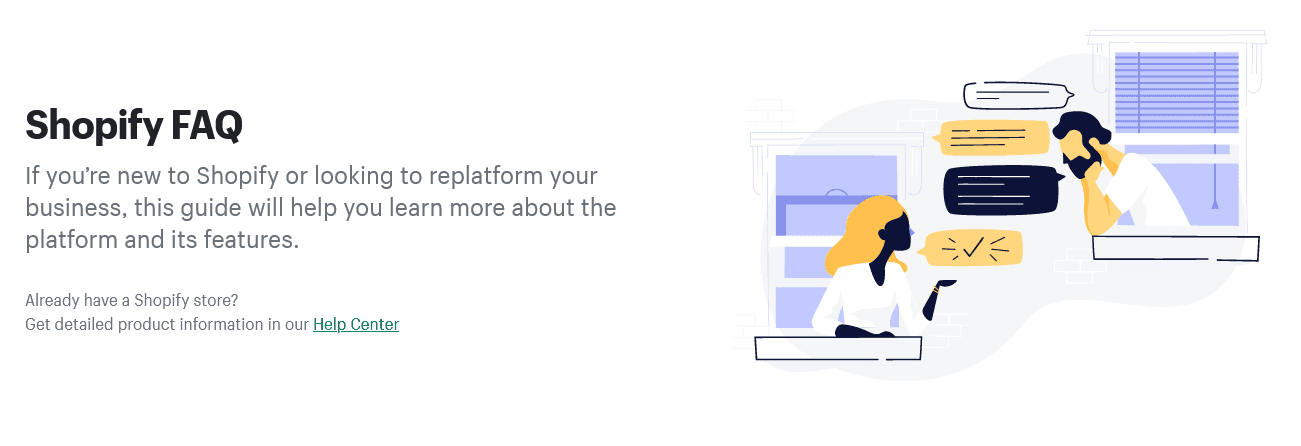
Source: Shopify
It might not contain every piece of information that exists about Shopify, but it answers the most common questions about getting started with the platform, selling, payments, and shipping.
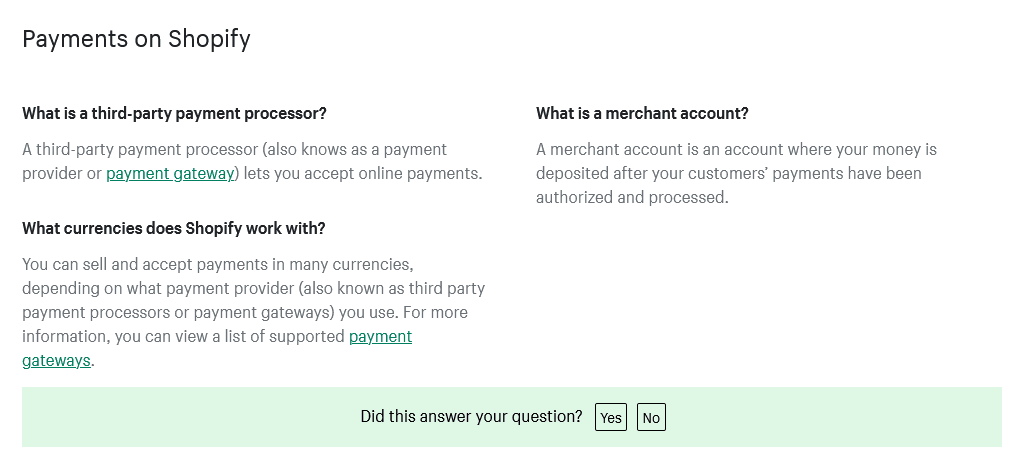
Source: Shopify
Of course, that won’t make the customer support team obsolete.
Educating the customers doesn’t mean they’ll become the experts who know the product like it’s their own creation; they’ll still occasionally need help from professionals.
But educating them can undoubtedly reduce the number of repetitive queries they can get daily, making the customer support team more productive and helpful to those who need their help with complex product issues.
It Increases Return on Investment
Like any other type of business, SaaS business needs good financial results to succeed. Without that, there’s no growth, new products, or new customers.
Customer education can play a significant role in improving that.
How? Well, educated customers are more likely to be satisfied with the product because they know how to use it for their needs.
They have the necessary know-how and can see the value that your product offers.
And when they see the value, why wouldn’t they keep using the product? In other words, educating customers leads to better retention and product adoption.
That also brings us to another benefit of customer education, and that’s a higher return on investment (ROI).
As Amy Gallo explains in a Harvard Business Review article, retaining existing customers is cheaper than acquiring new ones.
It makes sense: you don’t have to spend time and resources going out and finding a new client—you just have to keep the one you have happy.
You can keep them happy in a number of ways, including educating them about the product and showing them all the benefits they can have by using it.
Also, keeping existing customers is crucial, especially for SaaS businesses. According to data from TSIA, at least 90% of their revenue comes from recurring resources.
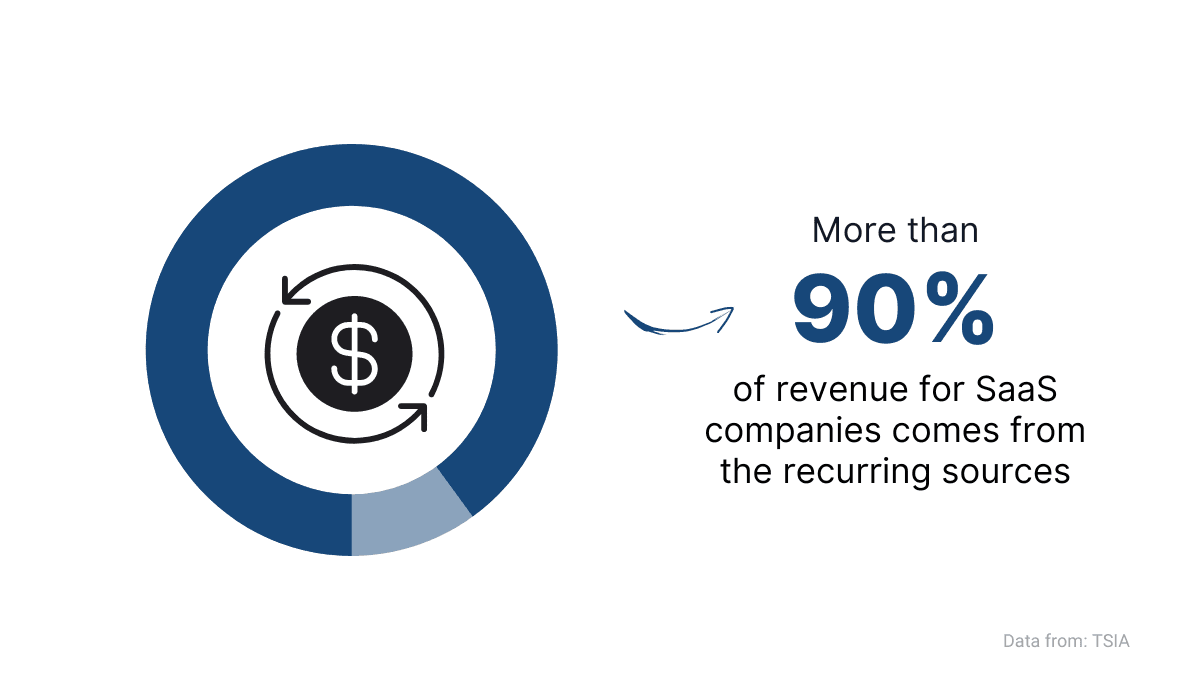
Source: Archbee
In other words, customer education can play a big part in ensuring the majority of your revenue.
An educated customer is a happy customer, and a happy customer doesn’t leave. Keeping that in mind can be vital for the ROI.
How to Create a Customer Education Program
Now that we’ve discussed what customer education is and why it is important for you and your business, it’s time to examine how to approach educating customers.
As we mentioned, education can result in a significant positive impact for everyone involved in the process, so it’s something that you shouldn’t brush aside.
Let’s see how to get the most out of it.
Set Goals for Your Education Program
The benefits of customer education are far too important for a SaaS company to approach it haphazardly.
You should devise a program that has clear goals.
That way, it will be easy to determine whether the goals have been met and, consequently, if your education efforts have been successful.
As Vishal Rewari, a specialist in SaaS product growth, puts it, training or educating customers should be systematic.
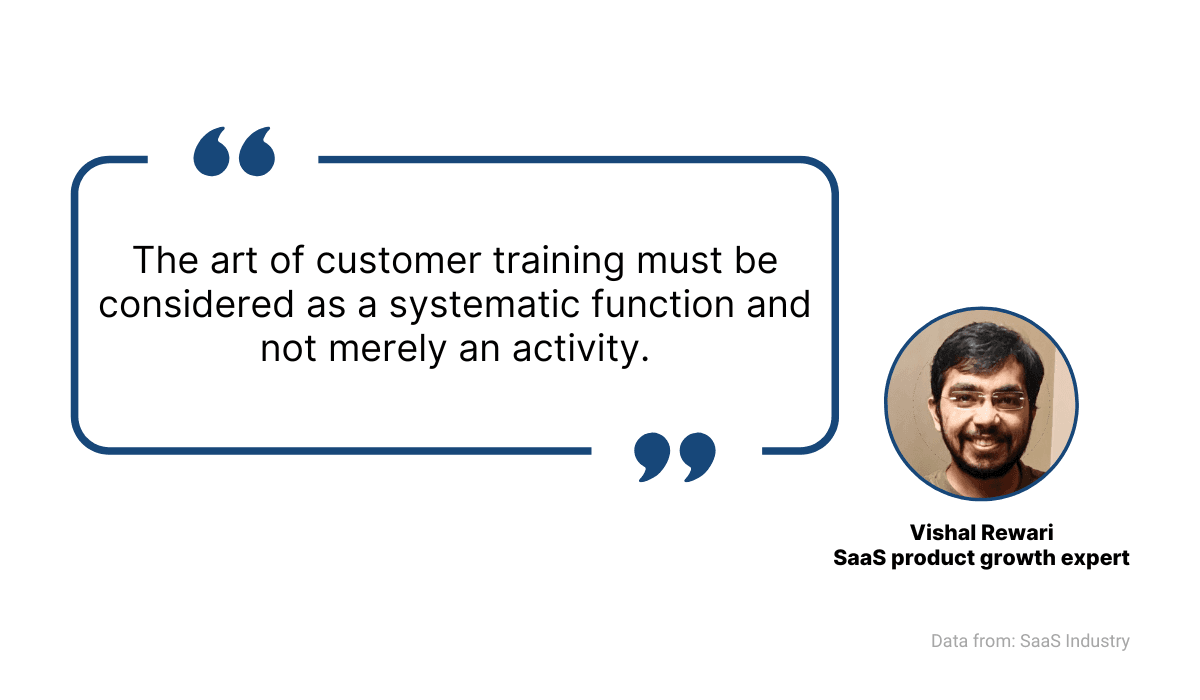
Source: Archbee
One way of accomplishing that is by setting SMART goals.
What are SMART goals? Those are the goals that are:
- Specific
- Measurable
- Achievable
- Relevant
- Time-bound
For example, let’s say you want to decrease the volume of customer support tickets, a benefit of education we mentioned earlier.
How can you frame it in the SMART model? For instance, you can put it like this:
In the next six months, we will create a public knowledge base to educate customers and reduce the number of support tickets by 20%.
That goal is specific and clear.
We can measure it because we set a percentage to hit.
It is achievable; we have the team to create a knowledge base, the tools are available, and there’s enough time.
It is relevant to our company; we want to make customers happier and also increase revenue and retention.
Finally, it’s time-bound because we set a time frame.
Vaguely stating that you want to “educate customers” doesn’t help much. You should have clear goals to hit, and this model can be very effective.
Personalize Education for Each Customer Segment
As we mentioned earlier, one of the goals of customer education is to show the customers the value they get from your product.
But there is one thing to keep in mind—not every customer will use the product in the same way.
You should educate them about the features that will be most useful for them, but how can you know what those are?
After all, that depends on your customer’s needs, technical knowledge, industry, and many other factors.
Therefore, personalizing educational content is recommendable, but it can be challenging.
One of the ways you can customize it is to create different learning paths for different segments of your customers.
For example, Postfity collects information about the customer on the welcome screen.
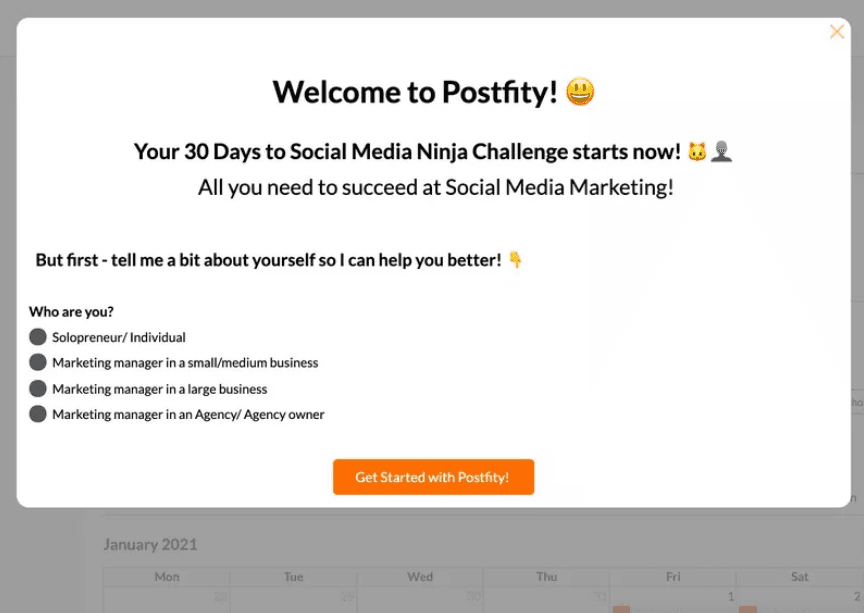
Source: Userpilot
As you can see, the customer needs to check the box that describes their professional status.
That can be valuable information for customization of the educational content because someone who’s a solo entrepreneur might not need the same features as a manager in a large enterprise.
Simply put, personalizing education brings the best out of your product for each customer segment.
Give Customers Access to a Knowledge Base
An important part of a successful customer education program is allowing customers to learn at their own pace and at a convenient time for them.
Customers highly value self-service. Most don’t want to rely on customer service and want to explore the intricacies of the product and its features on their own.
That requires creating a comprehensive resource they can access anytime, finding the information they need quickly and easily.
In other words, you should give your customers access to a knowledge base.
Building a knowledge base isn’t a small feat, but using a tool like Archbee can be very helpful.
Archbee is a product documentation platform with dozens of features tailored to creating, maintaining, and publishing educational resources for your customers.
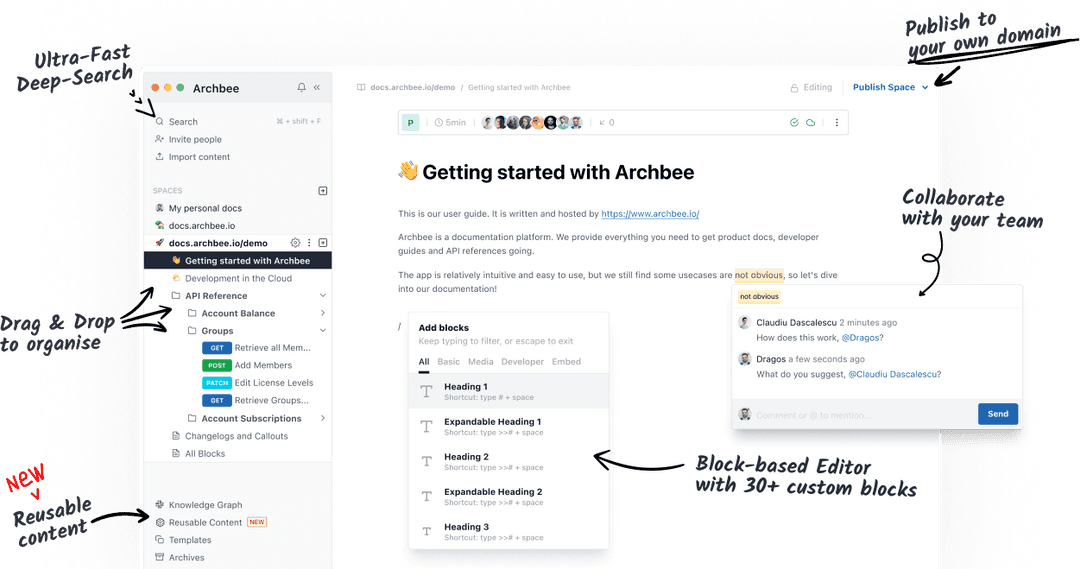
Source: Archbee
With Archbee, you can create product documentation that your users can access at any time and find what they need.
It makes content easy to organize and update. You can also enrich the text with various media.
For example, Drift used Archbee to create visually appealing docs about crypto trading on their platform.
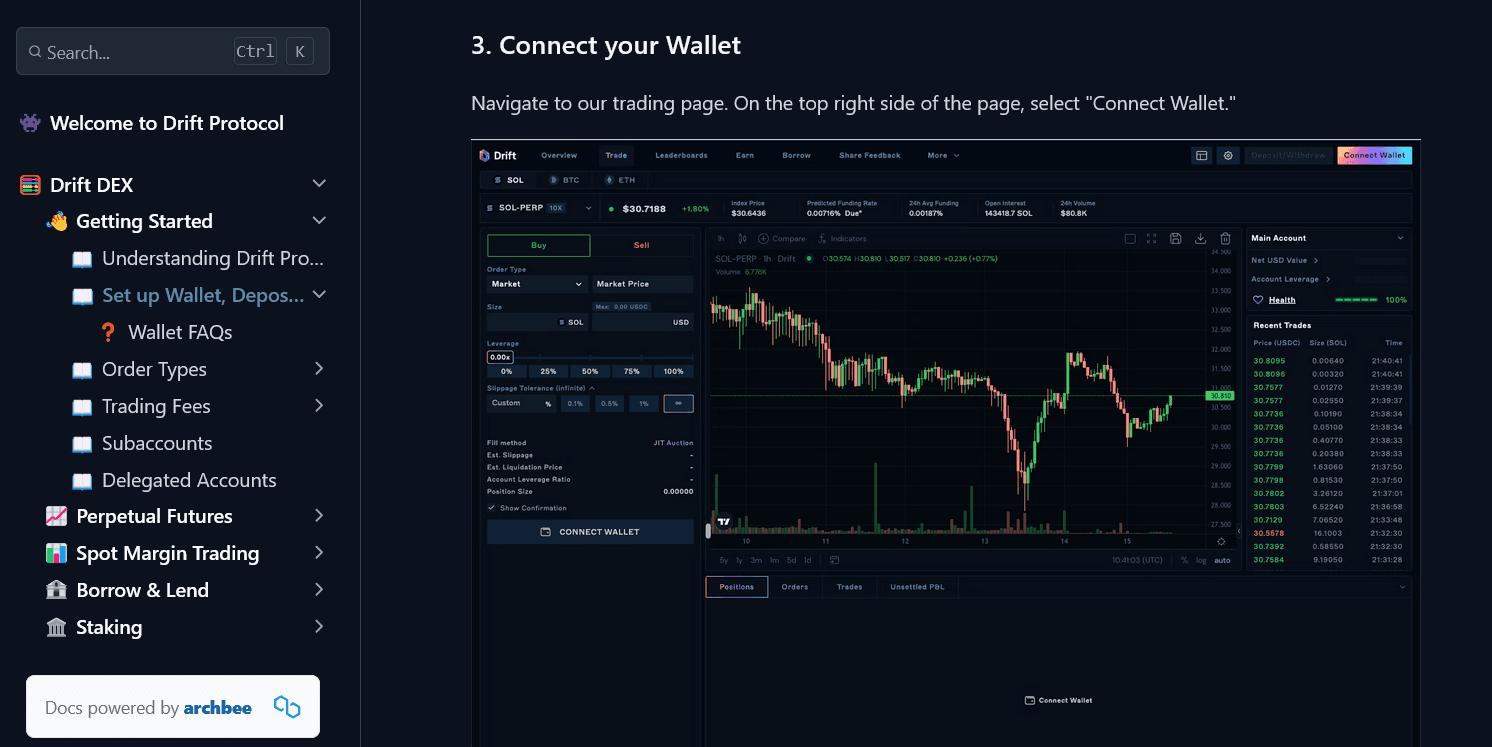
Source: Drift
Providing access to a knowledge base like that can be immensely valuable for customer education.
Essentially, you give your customers the keys to their own education, and all they have to do is open the door and step in.
Measure the Effectiveness of Your Program
Creating outstanding customer education is an ongoing process.
As your product and its features change, so should your educational content. If it doesn’t reflect the current state of your product, then its usability is in question.
Therefore, updating your education program is necessary. But how to know what to change and/or improve?
By measuring its effectiveness.
There are various ways to do that.
You can use tools like Google Analytics to examine how your customers interact with your educational content, which help articles they open the most and which are the least needed.
Another way is to ask them with surveys, microsurveys, and other feedback forms.
As Christy Hollingshead, VP of Customer Education and Engagement at Heap, advises, simply asking is a great way to assess what to improve.
Once you have a decent library of educational content, bring customers there, and start asking them from there what else they need, what isn’t clear, and what to improve.
You can also ask customers for feedback after or during the onboarding guide or an in-app tour.
Tools like Typeform provide useful templates for that.
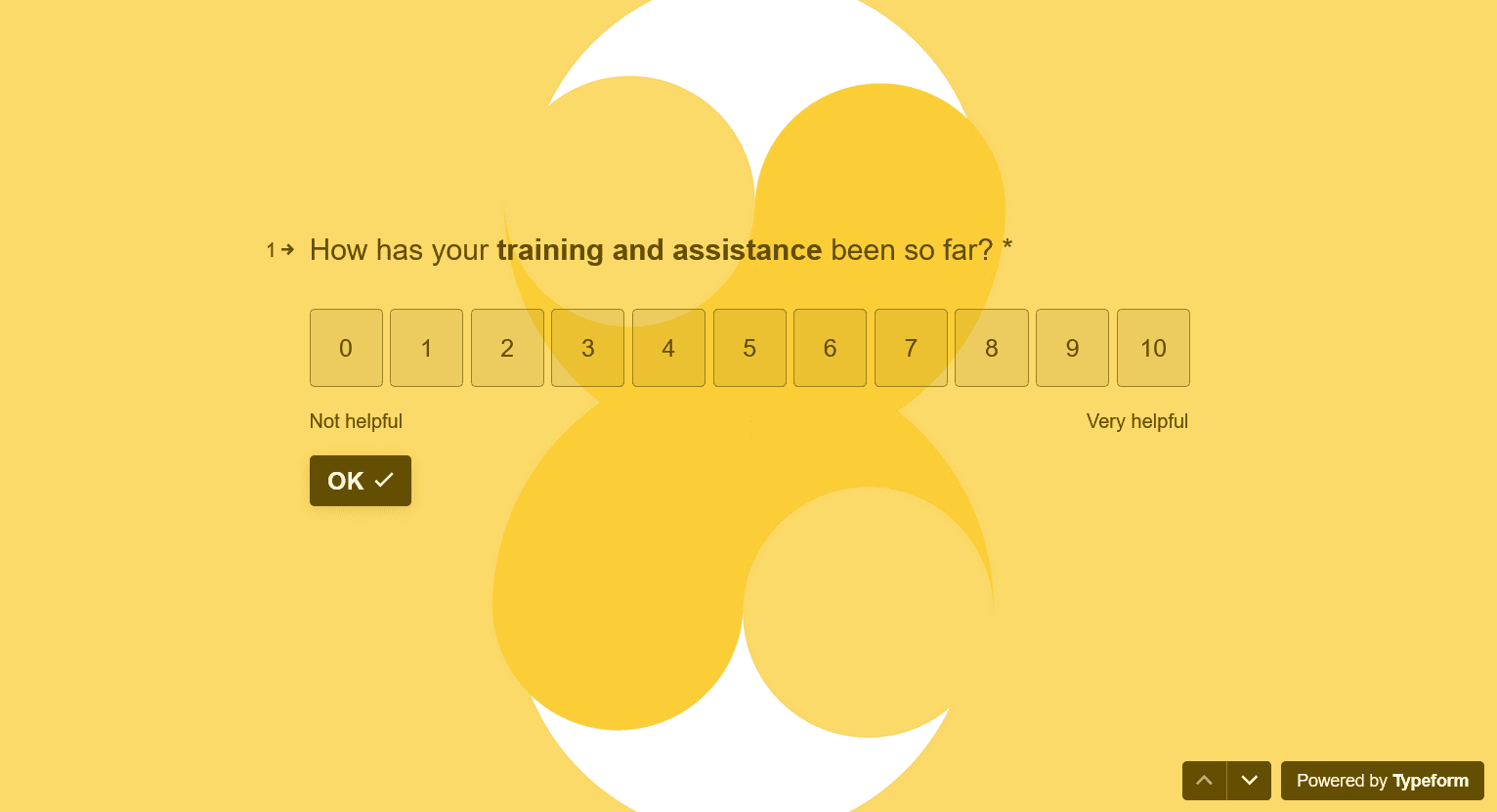
Source: Typeform
As you can see above, you can ask customers to rate their learning experience on a scale.
Furthermore, you can also ask them for more in-depth feedback.
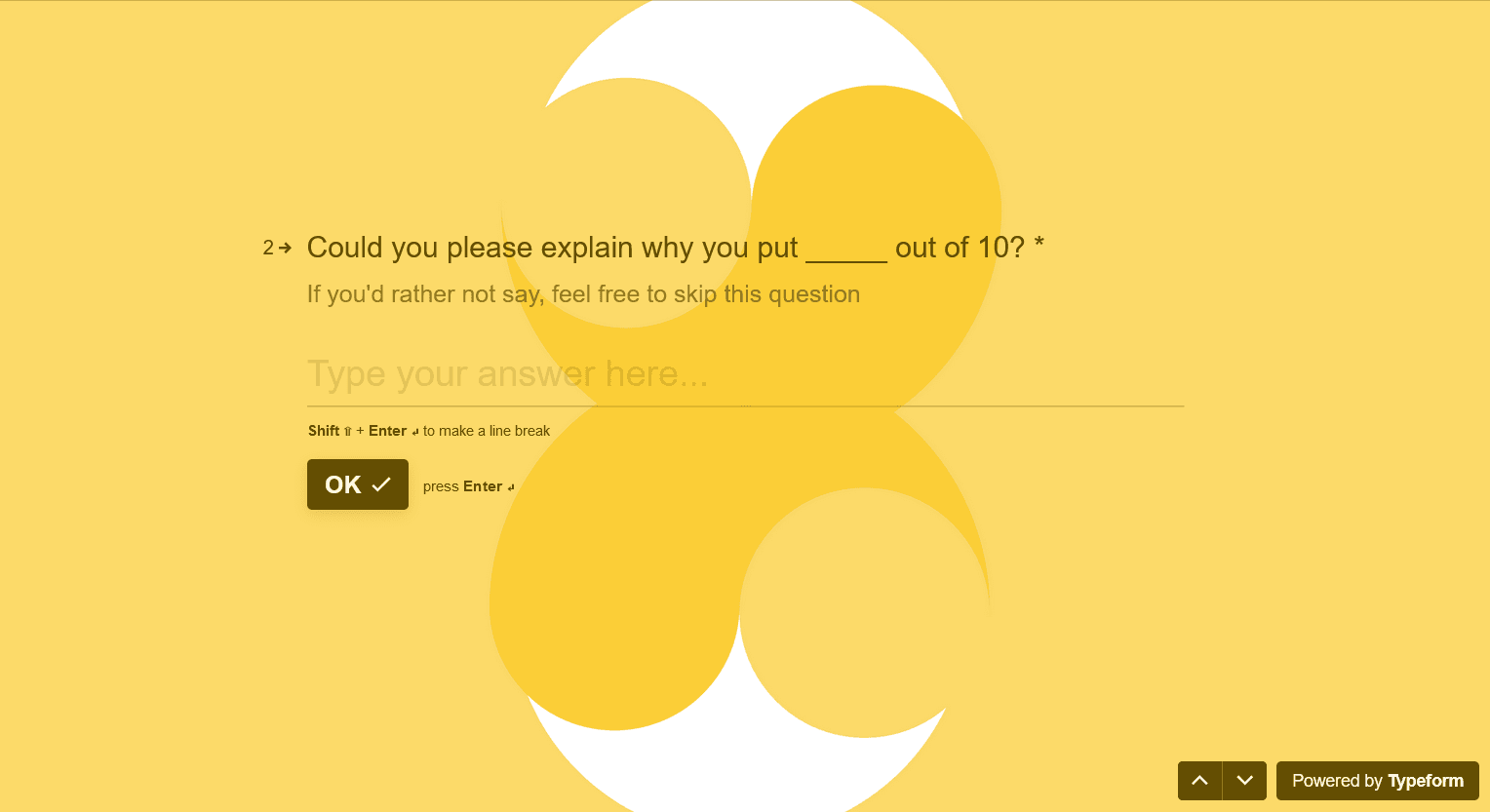
Source: Typeform
Regardless of the method you use to measure the effectiveness of your educational program, the point is to use those findings to improve it.
Only by doing that can you continue to provide stellar educational experiences for your customers.
Conclusion
Now that we’re at the end of this guide, we hope you will use the knowledge from it to make great strides in customer education.
Better customer education can bring along great benefits.
Customers are more satisfied because they know how to use the product efficiently and improve their lives.
Increased customer satisfaction means that your team and your organization as a whole can count on improved retention, more revenue, fewer customer support tickets, and more time and resources to invest in even better products.
The power of customer education can be very significant. Use it to your advantage.
Frequently Asked Questions
Customer education is the ongoing practice of helping users understand, adopt, and succeed with your product. It includes all the resources and experiences that teach customers how to get started, solve common tasks, explore advanced features, and keep up with product changes. This can range from in-app guidance and help center articles to video tutorials and full training programs. The goal is simple: shorten time to value, increase confidence, and make customers more successful and satisfied.



